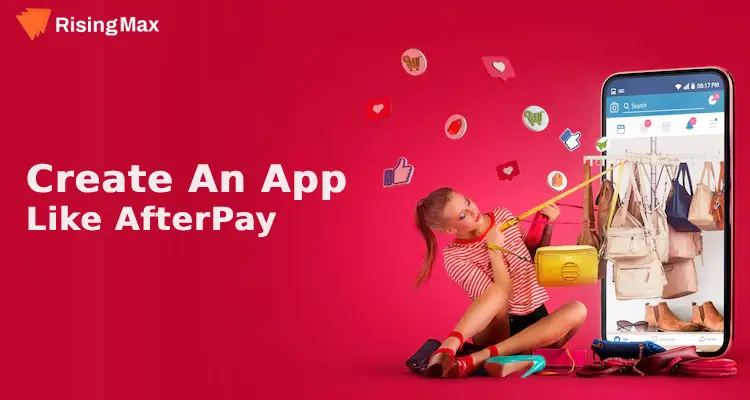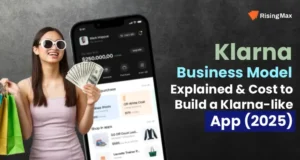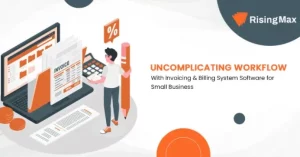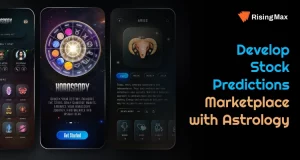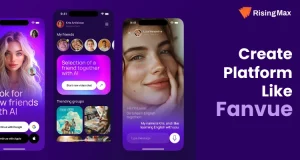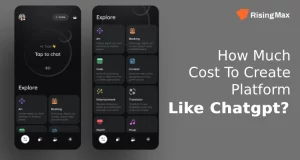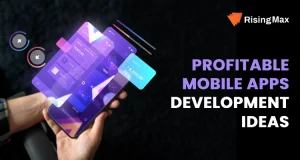In the modern world, people are struggling to find more and more time for everything, so they prefer to use the time they do have as efficiently as possible when it comes to shopping. This has led to the development of such solutions as the “Buy Now Pay Later” concept such as Afterpay. In case you are interested in knowing how to create an app such as Afterpay, then I must assure you that you are in the right place. In this article, based on my research and my own experience of working as a mobile app developer, I’ll provide the basics of creating an Afterpay clone: I’ll tell you what the application is and what its major components are, what technologies should be used in the development process, and what potential benefits such an app can have.
Ready to Create An App Like BNPL App Development?
If you’re inspired to create an app like Afterpay, let’s bring your vision to life! Contact us today to start building your very own Buy Now, Pay Later app and capture a share of this booming market.
How Does an App Like Afterpay Make Money?
Afterpay, Klarna, and other BNPL apps have created a buzz with their innovative business model. As per my research, these apps make money in several smart ways:
Merchant Fees: The primary revenue stream comes from fees charged to merchants. Merchants pay a commission of about 4-6% per transaction to offer BNPL services. While this might seem high, it’s worth it for businesses because it helps increase sales and attract customers who prefer paying in installments.
Late Fees: Apps like Afterpay charge late fees if users miss their installment payments. Although not the primary source of income, it does contribute significantly. For example, Afterpay charges a fee capped at 25% of the purchase price or a fixed amount, whichever is lower.
Interest and Financing Fees: Unlike traditional credit, most BNPL apps don’t charge interest to customers directly, but some advanced versions do, especially for longer-term payment options. For instance, Afterpay doesn’t charge interest for the standard short-term installment plans, but other competitors might for extended periods.
Partnerships and Ads: Apps like Afterpay also earn through brand partnerships and featured advertisements within their app. Brands pay for visibility, reaching millions of active users and boosting their product sales.
How Much Does It Cost to Create an App Like Afterpay?
If you’ve been keeping up with the latest financial technology trends like me, you might have noticed how Buy Now, Pay Later (BNPL) apps like Afterpay, Klarna, and Affirm are reshaping how we shop. As per my research, developing a BNPL app involves several factors that can influence the overall cost, including features, design, and development location.
Basic App Development Costs: The average cost to develop a basic BNPL app usually ranges from $50,000 to $80,000. This version might include essential features like user registration, payment processing, and basic analytics.
Advanced Features: If you want to include advanced features like machine learning for credit scoring, fraud prevention, or a more sophisticated UI/UX design, the cost could rise to $100,000 to $150,000. For example, integrating features like personalized offers or loyalty programs will need more development hours and increase the price.
Development Team and Location: Hiring a development team from North America or Europe will cost more than teams from India or Eastern Europe. Based on my findings, hourly rates can range from $50 to $200 per hour, depending on the team’s location and expertise.
Maintenance and Updates: Remember, app development doesn’t stop after the launch. You need to budget for ongoing maintenance, which could add another 20% to 30% of the initial development cost annually.
So, what’s the final number? A fully functional BNPL app with advanced features can cost anywhere between $100,000 to $200,000, depending on your requirements.
How Does Afterpay App Work?
The Afterpay app works on a simple premise. Users can shop online or in-store and choose Afterpay as their payment method at checkout. Afterpay then pays the merchant upfront, and the user pays Afterpay back in four instalments over six weeks. The best part? There’s no interest or fees as long as payments are made on time. The app makes money by charging merchants a small fee for each transaction and by charging late fees to users who miss their payments.
Here’s a clear breakdown of how the Afterpay app works:
1. User Selects Afterpay at Checkout
Online Shopping: When shopping online, users choose Afterpay as their payment method during checkout.
In-Store Shopping: In physical stores, users can use the Afterpay app to generate a barcode or QR code to show at the register.
2. Afterpay Pays the Merchant Upfront
Instant Payment: Afterpay pays the total purchase amount to the merchant immediately after the user selects Afterpay at checkout.
Merchant Benefit: This upfront payment helps merchants receive their funds faster and increases their sales by offering flexible payment options to customers.
3. User Receives Purchase and Makes Payments
Payment Schedule: The user agrees to pay Afterpay in four equal installments. These payments are due every two weeks over a six-week period.
No Interest: As long as payments are made on time, there’s no interest charged to the user.
4. Payments Are Automated
Automatic Deductions: Payments are automatically deducted from the user’s linked payment method (credit/debit card) on the due dates.
Payment Reminders: The app sends reminders before each payment is due to help users stay on track.
5. Late Fees Apply for Missed Payments
Late Fee Charges: If a user misses a payment, Afterpay charges a late fee. These fees are capped to ensure they remain reasonable.
Fee Structure: The late fee is generally a fixed amount or a percentage of the purchase price, up to a certain limit.
6. Afterpay Makes Money
Merchant Fees: Afterpay earns revenue by charging merchants a small fee for each transaction processed through their platform.
Late Fees: Additional revenue comes from late fees charged to users who miss their scheduled payments.
7. User Account Management
App Dashboard: Users can track their purchases, payment schedule, and account status through the Afterpay app.
Customer Support: The app provides support for managing payments, updating payment methods, and resolving any issues.
The simplicity of Afterpay’s model, with its upfront merchant payment and user-friendly installment plans, makes it an attractive option for both consumers and businesses.
Benefits of Apps Like Afterpay For Businesses in Fintech
Businesses that decide to venture into Afterpay clone development can reap numerous benefits. Firstly, BNPL apps attract a wider customer base, especially those who may not have access to credit cards or prefer not to use them. As a result, businesses can see increased sales and customer loyalty. Secondly, the data collected through these apps can provide valuable insights into consumer behaviour, enabling businesses to tailor their offerings more effectively. Moreover, the revenue from merchant fees and potential late fees can make such apps profitable ventures.
How to Create a Buy Now Pay Later App Like Afterpay?
When considering how to develop an app like Afterpay, several steps are crucial:
Market Research: Start by researching the BNPL market. Identify your target audience, understand their needs, and analyse your competitors.
Business Model: Define your revenue streams. Will you charge merchants, implement late fees, or both?
Regulatory Compliance: Ensure your app complies with local financial regulations, including data privacy laws and consumer protection guidelines.
User Interface (UI) and User Experience (UX): The app must be user-friendly. The sign-up process should be quick, and the payment process should be seamless.
Partnerships with Merchants: Build relationships with merchants to offer your BNPL service on their platforms.
Development: Hire the right app development team, technology stack and begin the development process. Whether you decide to build the app in-house or outsource it, focus on scalability and security.
Testing: Rigorously test your app to iron out any bugs and ensure it provides a smooth user experience.
Launch and Marketing: Once the app is ready, launch it and focus on marketing strategies to attract users and merchants.
Must Have Features in Buy Now Pay Later Apps like Afterpay
When diving into Afterpay-like app development, it’s essential to incorporate the following features:
Simple Sign-Up Process: Make it easy for users to register with minimal information.
Flexible Payment Options: Offer various payment plans, such as the standard four-instalment plan, and allow users to choose their preferred method.
Instant Approval: Use algorithms to instantly approve users for purchases based on their creditworthiness.
Secure Payments: Implement robust encryption and fraud detection systems to protect users’ financial data.
Notifications and Reminders: Send users reminders about upcoming payments to reduce the risk of late fees.
Merchant Integration: Seamlessly integrate with online and offline retailers.
User Support: Provide customer support through chat, email, or phone.
Build Your Own BNPL App Like Afterpay?
Unlock the potential of the booming BNPL market! Turn your app idea into a reality, Start your journey today and transform the way people shop!
Tech Stacks to Consider to Develop a BNPL App
From my research, the technology stack plays a pivotal role in the success of your BNPL app. For frontend development, you might consider using React Native or Flutter to create a smooth, cross-platform user experience. On the backend, Node.js or Python can be excellent choices due to their scalability and performance. For the database, MySQL or MongoDB is ideal for handling large volumes of transactions. Don’t forget about APIs; you’ll need them for payment gateways, user authentication, and merchant integration.
Top Buy Now Pay Later Apps in Future
Apart from Afterpay, several BNPL apps are making waves in the industry. Klarna, Affirm, and Splitit are a few names that have established themselves as leaders. As this sector grows, I foresee even more innovation, with new players entering the market offering unique features and services. Keeping an eye on these apps can provide inspiration and insights for your own Afterpay clone app development.
Here’s a detailed look at some of the top Buy Now Pay Later (BNPL) apps that are shaping the future of this industry:
1. Klarna
Klarna, originally founded in Sweden in 2005, has become a major player in the BNPL space. As per my research, Klarna offers several flexible payment options, including pay later, pay now, and slice it (installments). The app allows users to shop from thousands of online stores with the choice to pay over time.
Features: Klarna provides a smooth checkout experience, real-time spending insights, and personalized offers based on user behavior.
Monetization: Klarna earns primarily from merchant fees and interest on extended payment plans. Merchants pay a fee to offer Klarna’s payment options, which helps them increase conversion rates and average order values.
2. Affirm
Affirm, launched in 2012 in the U.S., is known for its transparent and flexible payment options. Affirm offers users the ability to pay over 3, 6, or 12 months with clear terms and no hidden fees. As per my research, Affirm’s approach focuses on providing a simple, straightforward borrowing experience.
Features: Affirm provides instant credit decisions, easy payment tracking, and the option to prepay without penalties.
Monetization: Affirm makes money from merchant fees and, in some cases, interest charges on extended repayment terms. Merchants benefit from higher conversion rates and larger purchases.
3. Splitit
Founded in 2012 in Israel, Splitit offers a unique BNPL solution that leverages existing credit card limits for installment payments. Instead of taking a loan, Splitit splits the total amount into equal monthly payments while using the user’s credit card.
Features: Splitit allows users to keep their credit card rewards and benefits while paying in installments. The app integrates seamlessly with existing credit card infrastructure.
Monetization: Splitit charges merchants a fee for using its service, which includes transaction fees and integration costs.
Emerging Trends and Future Outlook
As the BNPL market evolves, I expect to see several emerging trends:
Increased Integration with E-Commerce Platforms: Future BNPL apps will likely offer more integrated solutions with e-commerce platforms, making the checkout process even smoother for users.
Personalized Financial Solutions: New players might introduce more tailored financial products based on user spending habits and credit profiles, providing even greater flexibility.
Expansion into New Markets: As BNPL continues to gain traction globally, new players will enter diverse markets, each offering unique features to cater to local preferences.
Enhanced Fraud Prevention: With the growing popularity of BNPL, enhanced fraud prevention technologies will become a priority, ensuring both users and merchants are protected.
Keeping an eye on these trends and established players like Klarna, Affirm, and Splitit will offer valuable insights if you’re considering developing your own BNPL app. Their success and innovation set a high bar for future developments in this space.
Conclusion
An innovation area today within fintech is to build an app similar to the Afterpay BNPL one. Through right approaches such as conducting a competitive analysis to define the appropriate tech stack, one has to develop an app that not only challenges Afterpay, but also captures current market demands. And so, it appears that the successful business model is to be workable, unambiguous, secure, and user-friendly. It is time to start thinking on how to develop an app like Afterpay if you are considering developing one.
FAQs
1. How long does it take to build an app like Afterpay?
The development timeline can vary, but typically, it takes about 6 to 12 months to build an app like Afterpay from start to finish.
2. How much does it cost to develop a Buy Now Pay Later app?
The cost can range from $100,000 to $500,000, depending on the complexity and features of the app.
3. What are the key challenges in developing an Afterpay clone?
Key challenges include ensuring regulatory compliance, securing merchant partnerships, and creating a user-friendly interface.
4. Can I monetize the app other than charging merchants?
Yes, you can also earn from late fees, premium features, and partnerships with other fintech services.
5. Is it necessary to develop an app for both iOS and Android?
To reach a broader audience, it’s advisable to develop your app for both platforms, using cross-platform tools like React Native or Flutter.
6. What should I prioritise: user experience or features?
Both are crucial, but initially, focus on delivering a flawless user experience to build a loyal customer base.

